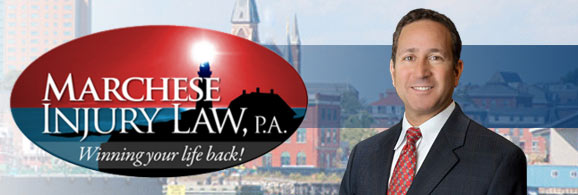Drowsy Driving Prevention Week
A recent poll conducted by the AAA Foundation echoed the results of numerous National Sleep Foundation Polls, namely that a large percentage of Americans report driving under the influence of sleep. In this latest poll, one-third of those surveyed admitted to driving drowsy in the past 30 days. A 2005 NSF poll of approximately 1,000 people found that 60% of drivers, or about 168 million people, admitted that they had driven while sleepy in the preceding year; and 37% confessed that they had actually fallen asleep behind the wheel. Studies in the U.S. and Canada show that sleep deprived drivers are 2.5 times more likely to have automobile accidents, while drowsy truck drivers are 3 to 5 times more likely to be in a head-on collision.2
DRIVING DROWSY AS DANGEROUS AS DRIVING DRUNK1
We all know the symptoms. Your eyelids droop and your vision becomes blurry. Your head feels so heavy that you can’t hold it up and so your chin keeps falling toward your chest. You can’t stop yawning. Diagnosis is clear to most of us: You’re sleepy.
Many surveys over the past four to five decades show a steady decline in the number of hours that people are sleeping. You add to that an increase in shift work and an increase in sleep disorders such as obstructive sleep apnea, which is increasing in parallel with the rising weight of the average American, and you have one sleep-deprived nation, one whose citizens drive on a daily basis. This week is Drowsy Driving Prevention Week, and numerous organizations such as the National Sleep Foundation and the AAA Foundation for Traffic Safety are trying to get this topic before the American people.
A recent poll conducted by the AAA Foundation echoed the results of numerous National Sleep Foundation Polls, namely that a large percentage of Americans report driving under the influence of sleep. In this latest poll, one-third of those surveyed admitted to driving drowsy in the past 30 days. A 2005 NSF poll of approximately 1,000 people found that 60% of drivers, or about 168 million people, admitted that they had driven while sleepy in the preceding year; and 37% confessed that they had actually fallen asleep behind the wheel. Studies in the U.S. and Canada show that sleep deprived drivers are 2.5 times more likely to have automobile accidents, while drowsy truck drivers are 3 to 5 times more likely to be in a head-on collision.2
Educating people to the dangers of drowsy driving is a key step in prevention. The National Highway Traffic Safety Administration estimates that 100,000 auto accidents each year are the direct result of fatigue and sleepiness. That is a conservative estimate because we don’t always know when crashes are due to drowsiness. Drowsy driving is hard to quantify for a number of reasons. Investigators have figured out that an auto accident due to fatigue often shows no skid marks or signs that the driver tried to correct the course of the vehicle as they see with crashes due to intoxication. Speaking of intoxication, numerous studies have shown that sleepiness can impair driving skill s as much as being drunk. In fact, being awake for 20 hours straight makes the average driver perform as poorly as someone with a blood alcohol level of 0.08%, now the legal limit in all states. Whether proved by circumstances or statements of the driver or witnesses,driving while drowsy is negligent, giving rise to a claim for personal injuries.
Tips to avoid driving drowsy:
1. Recognize that sleep is an essential component of health and try to get the seven to eight hours each night that most people need.
2. Get treatment for sleep disorders such as insomnia, obstructive sleep apnea, restless legs syndrome and narcolepsy.
3. Avoid driving between the hours of 2 a.m. and 6 a.m. when the urge to sleep is the strongest. Also be aware of the afternoon slump. Auto accidents due to fatigue also often occur between 2 p.m. and 4 p.m. during the circadian dip in alertness.
4. Although caffeine is no substitute for a good night’s sleep, it can help alertness. So if you don’t suffer from insomnia or have a medical condition that is aggravated by caffeine, then by all means reach for a strong cup of joe when you must drive.
5. Pull over. If you are having the symptoms of sleepiness, do not assume you can control the urge. Many have done so with deadly consequences for themselves and serious injuries or wrongful death for fellow travelers. Find a safe place and try to take a 10-20 minute nap. Studies have shown that shorter naps result in greater alertness and better performance.
6. Avoid driving alone for great distances especially in the middle of the night.
7. Take a break every two hours if you are driving long distances as recommended by the National Sleep Foundation
8. Parents, please, talk to your children, and especially your teens who have started driving, about the dangers of driving while drowsy.
If you or a loved one has been injured in a car accident then contact us to speak to anexperienced personal injury lawyer at Marchese Injury Law. We can help you get your medical bills paid, and to fight the insurance companies for all the money you deserve.Call us toll-free at (888) 775-6042 or from local phones at 775-6042. Our offices are located at 477 Congress Street, Suite 1104, Portland, Maine, although we can meet you at other locations if more convenient to you. An experienced personal injury attorney can make all the difference!
_________________________________________________________________
1. Research from the studies of Lisa Shives, M.D., a leading sleep disorder expert.
2. The Safety Report, Vol. 2, Ed. 4.




